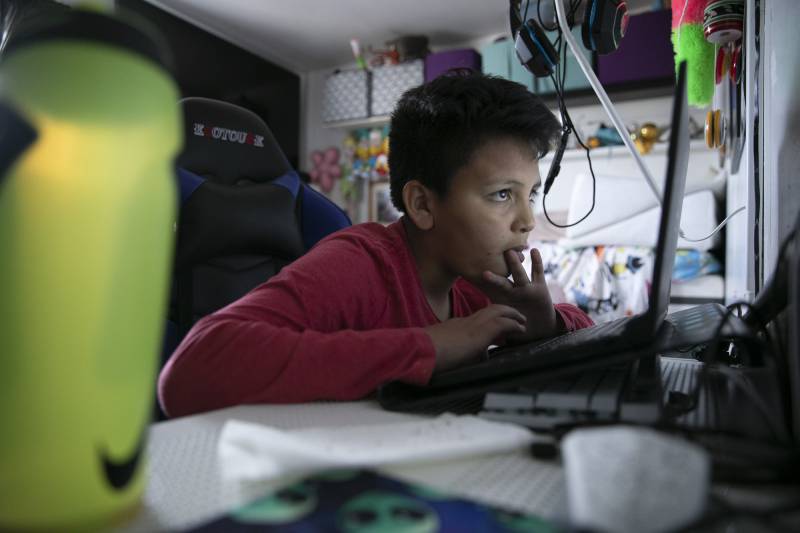But with California’s decentralized education system, the state’s authority was limited, said Elizabeth Sanders, a spokesperson for the California Department of Education. Still, the department provided ample assistance for schools under difficult circumstances, she said.
“Certainly, there were clear needs for support that students and families had during the pandemic. [The Department of Education] and Superintendent [Tony] Thurmond acted immediately to try to meet those needs,” Sanders said. “And when new needs arose, we stepped in to provide help every step of the way.”
For example, when some districts struggled to get laptops or tablets for every student, the state leveraged its connections to manufacturers to deliver enough devices to districts, even amid a global shortage, she said. In addition, the state provided a host of online resources for schools, addressing health, distance learning, reopening campuses, parents’ concerns and other topics.
Nonetheless, too many districts were “flying in dangerous conditions without a control tower or central place of support,” Bishop said. “They were largely left alone to weather the COVID storm.”
While some districts fared relatively well during remote learning, others struggled to meet students’ basic needs. That included everything from providing enough devices and Wi-Fi hotspots to addressing students’ mental health needs to offering adequate academic instruction.
“Schools and districts felt isolated and on their own dealing with this extraordinary moment in our history,” Bishop said. “They had to be public health experts, help parents find jobs and housing, provide IT support.”
The UCLA researchers also looked at solutions to a problem they say stretches far beyond the realm of schools. They said the Department of Education needs support from the Legislature and other agencies to create a long-term roadmap for recovery. It should include a comprehensive plan to address staffing shortages, expand mental health services and target services to students who need them the most, among other steps.
“Right now, there’s not a clear compass for where we’re headed and what we’re doing about it,” Bishop said. “Learning has been stagnant, but as a state, what are we doing about it? This is a question we need to answer.”
Parents’ frustrations
Kelly R., another plaintiff in the lawsuit, said she’s hopeful the settlement funds will help students across California regain lost ground.
During remote learning, her three daughters, who were enrolled in Los Angeles Unified, experienced shortened school days and large amounts of independent work they struggled to complete. Kelly R., a case manager, was working from home, and because the family lived in an airplane path, Wi-Fi was unreliable.
Her children were falling behind academically, lost their self-confidence and started disliking school, she said. This was especially frustrating, she said because just a few miles away in more affluent neighborhoods, students were attending in-person learning pods paid for by their parents and staying on top of their academics.
“It was stressful, discouraging. I had a sense of helplessness. I kept asking myself, what could I have done better?” she said. “Maybe if we had been in a different tax bracket, things would have gone differently.”
Compton Unified rebounds
Compton Unified, in Los Angeles County, has rebounded almost entirely from the pandemic, according to the most recent California Schools Dashboard data. Last year, English language arts scores surpassed the 2019 results, while math scores jumped 5.8% to nearly meet the pre-pandemic score. The graduation rate was 89% last year, two percentage points higher than in 2019. Chronic absenteeism was still high last year but lower than the state average of 24%.
Superintendent Darin Brawley credits a heavy investment in tutoring and mental health services, some of which pre-date the pandemic. The district used its COVID-19 relief funds to contract with four tutoring agencies and expand the mental health curriculum at all schools for families as well as students. It also operates 30 on-campus wellness centers that offer services such as mental health counseling, yoga and mindfulness and crisis intervention.

